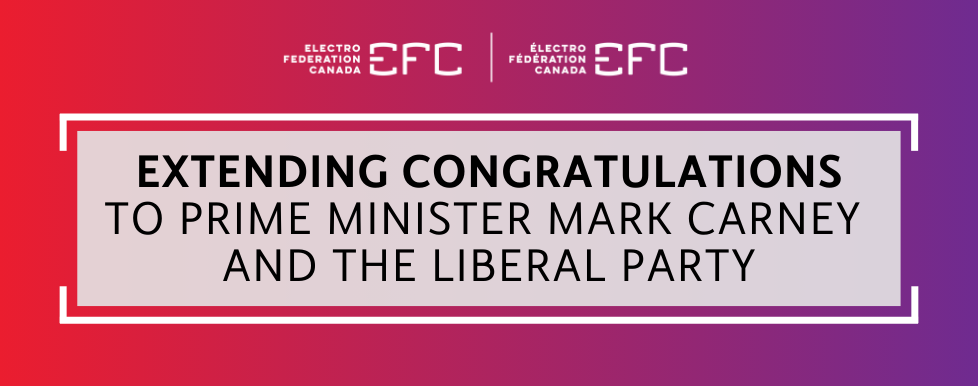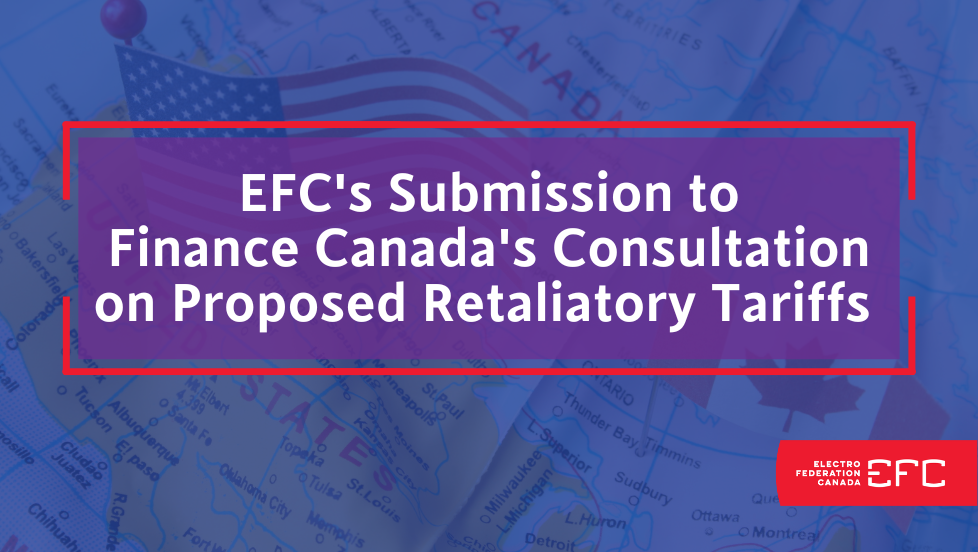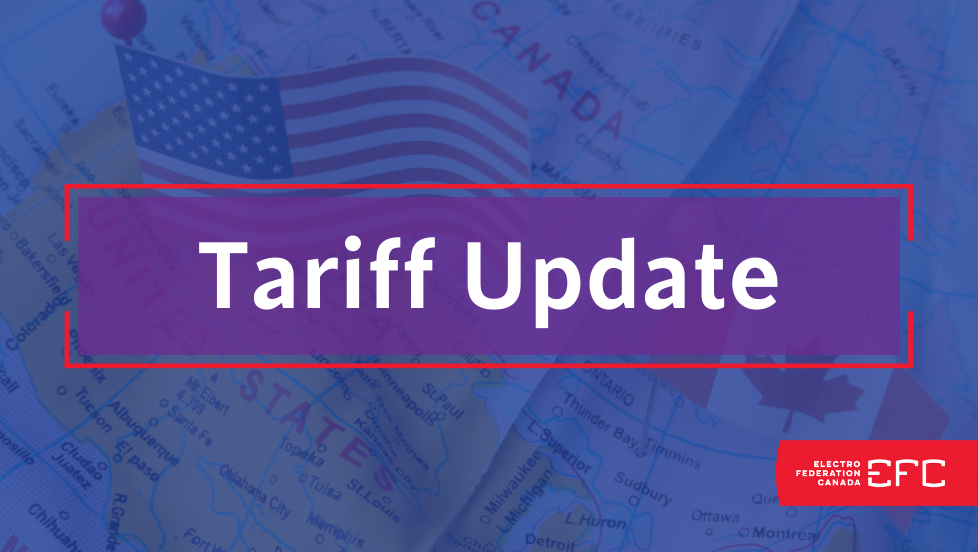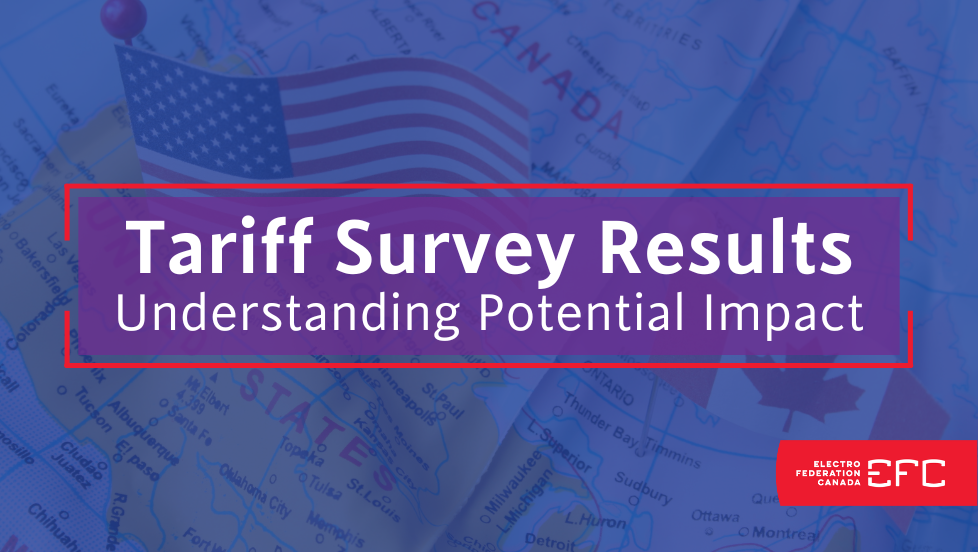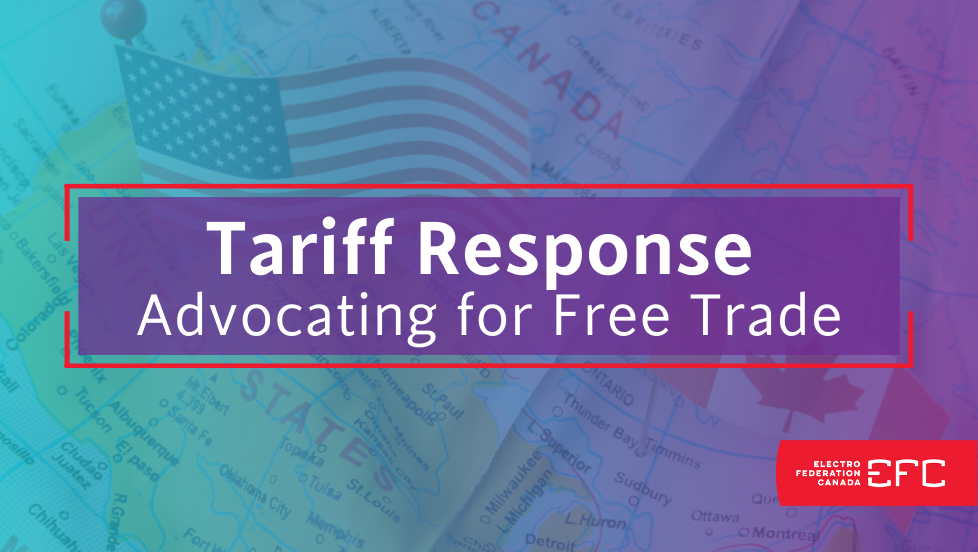This space provides a centralized location for EFC actions, government advocacy, and key industry resources regarding the ongoing tariff situation between Canada and the United States. Designed to keep our members aligned and ahead of developments, check back for updates and insights to help you navigate the evolving landscape.
EFC is committed to representing and advocating for our members, ensuring our collective voices are heard where it matters most. We appreciate our members’ ongoing support and participation in driving necessary action and positive change.
Last updated: December 5, 2025
The information on this webpage is for general informational purposes only. Tariffs and related policies are subject to frequent changes, and this site may not always reflect the most current updates. Users should verify details with official sources or consult a qualified professional before making any business or financial decisions based on this information.
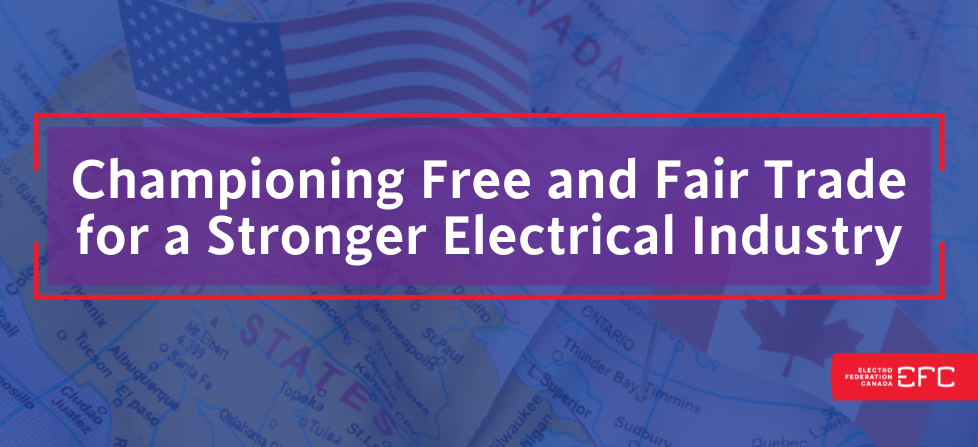 This week, Electro-Federation Canada (EFC) submitted its response to the Government of Canada’s consultation on the Canada-United States-Mexico Agreement (CUSMA). EFC strongly supports the continuation of CUSMA as a cornerstone of free and fair trade across North America. The agreement has been instrumental in fostering a highly integrated electrical and automation industry that benefits all three economies. With the U.S. and Mexico serving as key trading partners, maintaining tariff-free trade for CUSMA-compliant goods is essential to ensuring energy security, economic growth, supply chain resilience and affordability.
This week, Electro-Federation Canada (EFC) submitted its response to the Government of Canada’s consultation on the Canada-United States-Mexico Agreement (CUSMA). EFC strongly supports the continuation of CUSMA as a cornerstone of free and fair trade across North America. The agreement has been instrumental in fostering a highly integrated electrical and automation industry that benefits all three economies. With the U.S. and Mexico serving as key trading partners, maintaining tariff-free trade for CUSMA-compliant goods is essential to ensuring energy security, economic growth, supply chain resilience and affordability.
